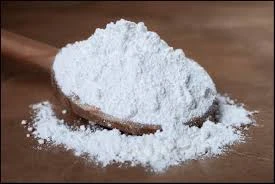
Exploring the Properties and Applications of Butyl Rubber in Various Industries
Understanding Butyl Rubber Properties, Applications, and Benefits
Butyl rubber, known for its unique polymer structure of isobutylene and isoprene, is a synthetic rubber that possesses exceptional properties, making it a highly sought-after material in various industries. Developed in the 1940s, butyl rubber's unique characteristics stem from its chemical structure, which results in low permeability to gases, excellent weather and ozone resistance, and high resilience. This article delves into the properties, applications, and benefits of butyl rubber, providing a comprehensive understanding of this vital material.
Properties of Butyl Rubber
One of the most significant attributes of butyl rubber is its low gas permeability. This property is particularly valuable in applications requiring airtight seals, such as in tire manufacturing, where it helps maintain tire pressure over extended periods. The consumption of butyl rubber in tires can improve fuel efficiency and safety, making it a crucial component in the automotive industry.
In addition to its impermeability, butyl rubber exhibits excellent aging characteristics, including resistance to heat, UV radiation, and oxidation. This longevity allows products made from butyl rubber to perform reliably over extended periods, whether in harsh outdoor environments or varying climatic conditions. Furthermore, butyl rubber is inherently non-toxic, making it suitable for a variety of specialized medical applications, including gloves and medical tubing.
Applications of Butyl Rubber
Butyl rubber is versatile and is used in various applications across multiple industries. The automotive sector is one of its largest markets, where it is extensively used in tire manufacturing—not only as an inner liner but also in sidewalls to provide better protection against damage. In addition to tires, butyl rubber is employed in the production of adhesive sealants, coatings, and insulating materials due to its excellent adhesion properties.
butyl rubber

In the pharmaceutical and medical industries, butyl rubber plays a critical role. It is commonly used for making stoppers in vials and syringes, ensuring airtight seals to preserve the sterility of medications. Butyl rubber is also frequently utilized in the manufacture of gloves and other protective gear due to its hypoallergenic properties.
The consumer goods sector also benefits from butyl rubber, especially in products such as sporting goods, sealants, and adhesives. Its flexibility and durability make it ideal for creating items that require both resilience and reliability, enhancing the overall user experience.
Benefits of Butyl Rubber
The benefits of butyl rubber are numerous. Its low permeability to gases not only enhances product performance but also contributes to energy savings in applications like tire manufacturing. By keeping tires inflated for longer, vehicles consume less fuel, resulting in lower carbon emissions and an overall reduction in their environmental footprint.
Furthermore, the adaptability of butyl rubber to various formulations allows for customization according to specific application needs. This versatility means that manufacturers can tailor the material properties, such as hardness and elasticity, to meet specific performance criteria.
In conclusion, butyl rubber is a remarkable material that combines exceptional properties with a wide range of applications. Its unique characteristics make it an invaluable asset in industries ranging from automotive to medical. As technology and manufacturing processes continue to evolve, the importance of butyl rubber is likely to increase, offering even more innovative solutions to complex challenges across various fields. Embracing the capabilities of butyl rubber means tapping into a future that values efficiency, safety, and sustainability.
-
nitrile-rubber-honoring-strict-production-standardsNewsAug.22,2025
-
aspartame-ingredients-honoring-food-safety-valuesNewsAug.22,2025
-
fertilizer-for-balanced-plant-nutritionNewsAug.22,2025
-
cyanide-gold-processing-with-high-purity-additivesNewsAug.22,2025
-
formic-acid-in-textile-dyeing-applicationsNewsAug.22,2025
-
aluminum-hydroxide-gel-in-skincare-productsNewsAug.22,2025
-
Regulatory Compliance for Global Mining Chemicals UseNewsAug.12,2025
Hebei Tenger Chemical Technology Co., Ltd. focuses on the chemical industry and is committed to the export service of chemical raw materials.
-

view more DiethanolisopropanolamineIn the ever-growing field of chemical solutions, diethanolisopropanolamine (DEIPA) stands out as a versatile and important compound. Due to its unique chemical structure and properties, DEIPA is of interest to various industries including construction, personal care, and agriculture. -

view more TriisopropanolamineTriisopropanolamine (TIPA) alkanol amine substance, is a kind of alcohol amine compound with amino and alcohol hydroxyl, and because of its molecules contains both amino and hydroxyl. -

view more Tetramethyl Thiuram DisulfideTetramethyl thiuram disulfide, also known as TMTD, is a white to light-yellow powder with a distinct sulfur-like odor. It is soluble in organic solvents such as benzene, acetone, and ethyl acetate, making it highly versatile for use in different formulations. TMTD is known for its excellent vulcanization acceleration properties, which makes it a key ingredient in the production of rubber products. Additionally, it acts as an effective fungicide and bactericide, making it valuable in agricultural applications. Its high purity and stability ensure consistent performance, making it a preferred choice for manufacturers across various industries.





